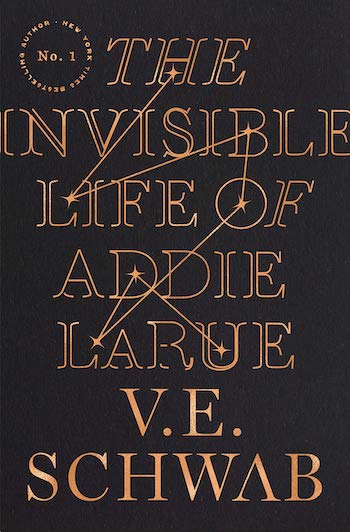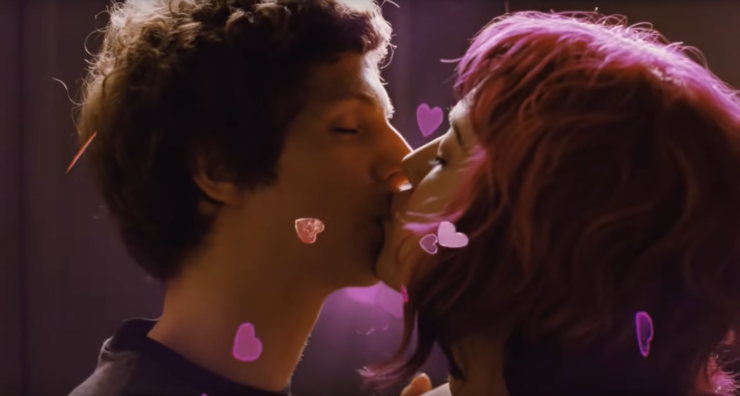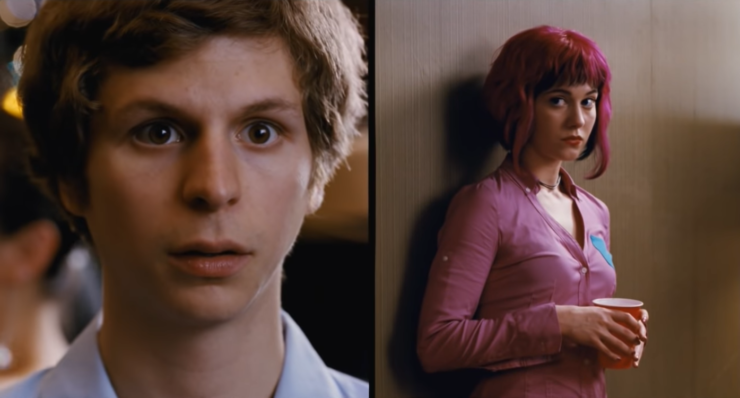Scott Pilgrim vs. the World (2010) may be Edgar Wright’s most perfect film, though hardcore fans of his earlier efforts may miss the imperfections. The movie marks Wright’s transition to Hollywood-size big budgets ($80.7 million over Hot Fuzz’s $16 million), and he uses the additional money to turn out an indie pop song movie filled with slickly catchy quirk.
The upgraded polish starts with the cast, which is no longer composed of British character actors flexing their relatively homely visages. Instead, Scott Pilgrim is populated with beautiful features and beautiful bodies, many of them on their way to Hollywood A-list status—Mary Elizabeth-Winstead, Chris Evans, Anna Kendrick, Brie Larson, Brandon Routh, and nerdy pretty-boy lead Michael Cera. The Britain of Shaun of the Dead and Hot Fuzz is populated by Simon Pegg, Nick Frost, and assorted BBC television schlubs, as far from typical Hollywood glamor as real life. Scott Pilgrim’s Toronto in contrast looks like a movie set, where everyone glows with youth and health and thinness.
The filmmaking is of a piece with the casting. In his earlier movies, Wright created lumpy genre mash-ups out of incongruous bits, making a rom-com lurch like a zombie film, or setting the action film to blast away at the cozy. The fun lies in watching the misshapen monstrosity lope and pivot through Wright’s playful quick cuts. The films are glorious ugly dances that should not be.
Buy the Book


The Invisible Life of Addie LaRue
Scott Pilgrim also uses genre mash-ups to great effect. It’s part rom-com, part scrappy band-makes-good biopic, part video fight game, with escalating battles on the way to the big boss battle. Scott Pilgrim (Cera) is a 22-year-old Toronto slacker bassist in a pop punk three piece called Sex Bob-omb which is playing in a battle of the bands. He’s still recovering from a painful break-up with glamorous rock star Envy Adams (Larson), and nervously dating his rebound girlfriend, 17-year-old Knives Chau (Ellen Wong). He meets his true love, Ramona Flowers (Winstead), but to be with her he needs to fight her seven evil exes in a series of video game martial arts battles complete with glowing eyes, explosions, and snake demons.
That all sounds preposterous and it very much is. Wright throughout the film includes animation and video game effects, as well as elements referencing the original Scott Pilgrim comic by Bryan Lee O’Malley. When characters kiss, we see an explosion of pink and purple hearts; a bass battle includes comic-book sound effects, “D-D-D-D-D”, doorbells emit floating letters spelling “Ding-dong”, and when opponents are defeated they explode into showers of coins. Combined with Wright’s mastery of quick cuts and idiosyncratic narrative beats, the film becomes a kaleidoscope of exuberantly cute visual jokes.
Those jokes are disjunctive and unexpected, but also seamless, like the set of a really accomplished and practiced comedian. “Rom-com video fight game” just isn’t as lumpy and off as “rom-com zombie film,” because the genres Wright is mashing together aren’t incongruous or out of sync. Rom-coms and video game fight narratives, and for that matter band biopics, are all built on narratives of empowerment leading to self-realization and a happy-ever-after. In terms of visual style, Scott Pilgrim is much more accomplished than, films like, say, Die Hard or Jumanji: Welcome to the Jungle. But the basic narrative mix of action, romance, and humor isn’t all that different.
In fact, part of the reason Wright is able to get away with his quick cuts and goofy narrative interpolations is that the story is so familiar. Scott and Ramona’s fight and semi-break-up can be communicated in shorthand staccato dialogue bursts before leaping elsewhere, precisely because the three-quarter-of-the-way-through-the-film break-up is such a rom-com staple. Wright doesn’t need to explain the motives of record exec and evil ex Gideon (Jason Schwartzman) because the final bad supervillain boss is the final bad supervillain boss, in action movies or in video games: you don’t need to explain a stock trope.
In Wright’s earlier films, the joke was that the genre expectations were pummeled and chopped out of shape, so the endings of Shaun of the Dead and Hot Fuzz are weird anticlimactic Monty Python gags. But the conclusion of Scott Pilgrim is the romantic and personal triumph you always knew it would be. Hollywood wrote the finish; Wright’s triumph is not in subverting or screwing with it, but in using it as the basis for inspired, but never too jarring, improvisation.

The little-band-makes-it-big narrative fits into the Hollywood empowerment formula too. It’s also, intentionally or otherwise, a meta-commentary on Wright’s own career, and Scott Pilgrim’s place in it. Like Sex Bob-omb, Wright was an indie performer first, but the film finds him leveling up, and, perhaps, selling out, as drummer Kim (Alison Pill) sardonically suggests. Pilgrim as a film feels a lot less personal than Wright’s early films—it’s an adaptation based on someone else’s story, featuring different actors than his usual ensemble. But that very impersonality is what connects it to the story of Wright’s own career, as he shifts from indie phenom to Hollywood success. Beat the big boss, date the girl of your dreams, have your band become the biggest thing in the world, have your films become the biggest thing in the world—it’s all one story, and it’s the Hollywood story. Empowerment, success, perfection.
Things didn’t quite work out that way, though. Despite critical enthusiasm, Scott Pilgrim inexplicably bombed at the box office, making back only about half its budget. Oddly or presciently, that parallels the fate of Sex Bob-bomb. Scott beats the villain and wins the girl. But he’d already left the band, whose contract is nullified when Scott kills Gideon, the guy who signed them. The evil record executive shatters, scattering coins everywhere, and the band is left to scrabble on the floor for the money—not a very dignified artistic stance.
Wright may or may not have been commenting on his own artistic scramble. His next project was co-writing the script for The Adventures of Tintin, directed by Steven Spielberg, so he came out of Scott Pilgrim better than Sex Bob-omb by most measures. In any case, Scott Pilgrim is, certainly, one of the most graceful transitions from indie to Hollywood that a director has ever accomplished. Wright managed to make a by-the-numbers film that was also wildly odd, and a genre-mash-up that fits seamlessly into mainstream genre requirements. It’s a triumph. And if it’s also something of a disappointment, well, that’s Hollywood.
Noah Berlatsky is the author of Wonder Woman: Bondage and Feminism in the Marston/Peter Comics (Rutgers University Press).










